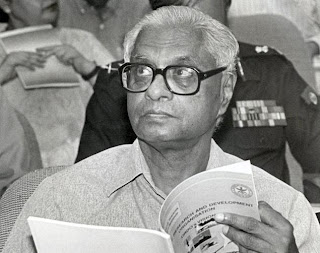Whatever else it says about the propriety of India’s political class, the latest tranche of WikiLeaks cables now being dispensed by The Hindu newspaper contains a sobering lesson for US-India relations. The revelations about the parliamentary chicanery surrounding the 2008 civilian nuclear accord, intended to be a launching pad for a new era of bilateral dynamism, can only reinforce lingering doubts in Washington about whether India’s political institutions are even capable of acting on the ubiquitous rhetoric one now hears about taking relations to a higher plane.
 It came as a shock to U.S. officials that the nuclear agreement, which garnered strong bipartisan support on Capitol Hill, provoked extraordinary melodrama on Raisina Hill. As the Washington Post noted in amazement at the time, “if New Delhi’s politicians cannot find a way to say yes to such a clearly advantageous agreement with a natural ally, the next U.S. administration no doubt will think twice before trying anything like it.” Of course, Prime Minister Manmohan Singh finally did manage to push the accord through the Indian parliament, but only after an extended and acrimonious debate. It was especially disconcerting that the debate devolved into an unprecedented parliamentary vote of confidence regarding a foreign policy issue. Singh’s narrowly-won victory was possible only through resort to some exceptional measures, including the furloughing from jail of members of parliament who had been convicted of murder and other serious crimes.
It came as a shock to U.S. officials that the nuclear agreement, which garnered strong bipartisan support on Capitol Hill, provoked extraordinary melodrama on Raisina Hill. As the Washington Post noted in amazement at the time, “if New Delhi’s politicians cannot find a way to say yes to such a clearly advantageous agreement with a natural ally, the next U.S. administration no doubt will think twice before trying anything like it.” Of course, Prime Minister Manmohan Singh finally did manage to push the accord through the Indian parliament, but only after an extended and acrimonious debate. It was especially disconcerting that the debate devolved into an unprecedented parliamentary vote of confidence regarding a foreign policy issue. Singh’s narrowly-won victory was possible only through resort to some exceptional measures, including the furloughing from jail of members of parliament who had been convicted of murder and other serious crimes.
As part of the debate, the main opposition party, the Bharatiya Janata Party, accused – in rather theatrical fashion – the Congress Party and its allies of paying hefty bribes in exchange for votes. A subsequent inquiry concluded that there was insufficient evidence to support the claim. But now the WikiLeaks cables give renewed credence to the allegation. In a dispatch sent a few days before the crucial confidence vote, the U.S. Embassy in New Delhi noted that the Congress Party machine was “working overtime” to ensure victory, including assembling cash-filled war chests “lying around the house for use as pay-offs.” The cable reports that members of the Rashtriya Lok Dal, a small party based in Uttar Pradesh, had already agreed to trade their votes in exchange for $2.5 million bribes and that an unsuccessful attempt had been made to inveigle members of the Akali Dal, a small Punjab-based party. Kamal Nath, a Congress Party veteran then serving as Minister of Commerce & Industry, was described as “helping spread largesse.” According to the cable, a Congress Party insider told an Embassy official that “formerly [Nath] could only offer small planes as bribes” but “now he can pay for votes with jets.”
These are serious – albeit unverified – allegations that only add to the thickening taint of corruption now engulfing Prime Minister Singh’s government. Of course, log-rolling and intrigue are nothing new in Indian politics, and those implicated in the cables have denied their veracity. But to policymakers looking on in Washington, what must be most dismaying is that, in order to secure passage of an agreement so obviously favorable to India, the Congress Party had to engage in such extraordinary steps. Apparently, the “normal” rules of parliamentary bargaining do not apply to significant foreign policy issues involving the United States. For those, the Congress Party has to up the ante – from small planes to jet aircraft.
The WikiLeaks cables also do nothing to strengthen the BJP’s credentials for principled leadership. During the debate over the agreement, Jaswant Singh insisted that the party’s opposition was not about tawdry partisanship but rather involved solemn issues of national sovereignty and military preparedness. But the opposite now appears true. In a March 2009 conversation with the U.S. chargé d’affaires, BJP supremo L.K. Advani connected the party’s stance to “domestic political developments then at play in India” and downplayed previous declarations that a future BJP government would “reexamine” the accord.
The WikiLeaks dispatches hardly inspire confidence in New Delhi’s credibility as a serious strategic partner. Prime Minister Singh deserves kudos for the political resolve he displayed during the tumult over the nuclear agreement. But his victory was also pyrrhic, revealing just how isolated he is inside the corridors of power. And if there is any substance to the latest accusations of political shenanigans, his reputation for probity will be further dented. For their part, BJP grandees stand exposed as petty partisans rather than stalwart champions of the national interest.
There are plenty of reasons to criticize the Obama administration’s approach to bilateral relations. But the next time the Indian commentariat is tempted to indulge in the “Obama disses India” narrative, one might first inquire into New Delhi’s own capacity for far-sighted statesmanship.

